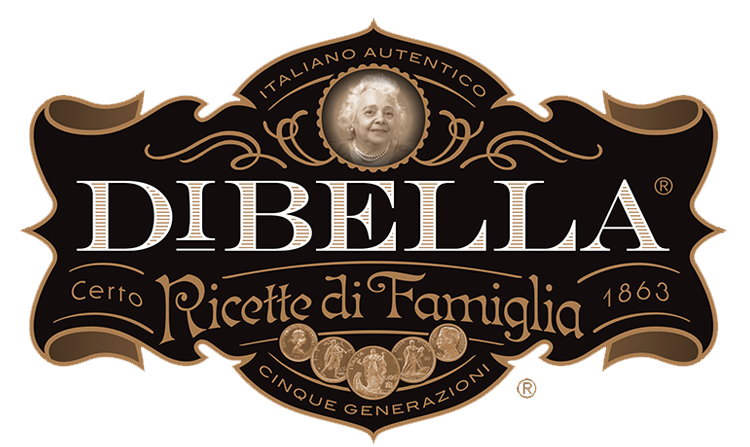Uncategorized
Poker Tournament Tips and Industry Forecast Through 2030: Practical Insights for Australian Players
Alright, let’s cut to the chase. If you’re stepping into the lively world of poker tournaments, you might already feel the tension in the room — the stakes, the players, the swirl of chips. But hold on, before you just jump in headfirst with your lucky charm, there are key strategic moves and industry trends you need to understand to actually come out ahead. Whether it’s your first live tournament or you’re eyeing online competition from Australia, grasping the nuances can mean the difference between a bust-out and a deep run.
Here’s what bugs me — too many newbies overlook the math behind tournament play and get blindsided by volatility and shifting player dynamics. So let’s unpack some actionable tips grounded in real practice, peppered with tangible examples and a solid look at where the tournament scene is heading through 2030.
Understanding tournament poker boils down to mastering three pillars: stack management, opponent reading, and adapting to structure changes. Unlike cash games, where your chips represent cash, tournament chips fluctuate in value as players get eliminated. Your survival and chip accumulation depend heavily on strategic risk-taking tied to blind levels and payout structures. For instance, a small stack in early levels demands a tight approach, while a big stack in mid-to-late stages opens up aggressive opportunities.
My gut says many players underestimate how critical blind structure knowledge is. Tournament organizers increasingly shift towards faster blind increase schedules to keep games exciting but this directly impacts your effective stack depth and strategy. The Australian market is seeing a surge in such turbo and hyper-turbo formats, especially online, complementing local live events.
At first I thought all tournaments were more or less the same, but then I realized that adapting your playstyle to the specific blind intervals and payout curve is crucial. For example, you should tighten up in deep stack events but loosen up drastically in turbo formats to compensate for diminishing fold equity. These nuances can’t be stressed enough, especially if you’re aiming for consistent ROI.

Key Poker Tournament Tips for Beginners
Something’s off… if you think that aggression alone wins tournaments. Let me break down some practical steps you can apply instantly:
- Manage Your Stack Relative to Blinds: Know your M-ratio (stack size divided by blinds and antes). If M drops below 10, it’s time to tighten or prepare for a shove. Example: with a $10,000 stack and blinds at 500/1,000, your M is about 6.7, signaling pressure to act.
- Observe Opponent Tendencies: Early on, focus on identifying who’s playing tight or loose. Adjust by stealing blinds from tight players and folding more to loose ones’ raises.
- Position Is Your Friend: Play more hands from late position where you have information advantage. This is especially true in multi-table tournaments where blinds escalate quickly.
- Play According to Tournament Phase: Early stages call for patience due to low blinds, while mid and late stages require calculated aggression and chip accumulation.
- Avoid Common Tilt Traps: Exhausted or frustrated players make mistakes. Control your emotions and take breaks if needed to maintain focus.
To give a mini-case: I once entered a $100 buy-in MTT with a decent $7,000 starting stack and held on tightly during the first two hours while others got reckless. Later, noticing a player tightening too much near the bubble, I started applying pressure with well-timed steals and doubles, finishing in top 10 with a $1,200 payout. The key was reading table dynamics and shifting gears accordingly.
Comparing Tournament Formats and Their Strategic Implications
Hold on… not all tournaments are created equal. The format you choose greatly influences your approach:
| Format | Blind Structure | Average Stack Depth | Typical Duration | Recommended Playstyle |
|---|---|---|---|---|
| Standard MTT | Slow to moderate | 40-50 big blinds | 4-8 hours | Patience, positional play, strategic aggression |
| Turbo | Fast | 20-25 big blinds | 2-4 hours | Aggressive shifts, frequent steals, wider hand ranges |
| Hyper-Turbo | Very fast | 10-15 big blinds | 1-2 hours | Push/fold strategy, high variance, risk tolerance |
| SNG (Sit & Go) | Variable | Depends on buy-in and players | 30 min–2 hours | Adjust to changing table size, chip accumulation focus |
Choosing the right format depends on your bankroll, risk appetite, and available time. For beginners, starting with standard MTTs helps build fundamental skills, while turbo or hyper-turbo formats test your ability to adapt rapidly but involve more variance and thus higher emotional swings.
Where Is the Poker Tournament Industry Heading Through 2030?
Here’s the thing: the landscape is evolving rapidly, shaped by technology, regulation, and player preferences. The Australian online poker scene is growing steadily, helped by broader acceptance of regulated platforms and innovative game variants. Yet, the legal landscape remains complex, with state-specific restrictions and a vigilant ACMA (Australian Communications and Media Authority) enforcing rules on offshore operators.
One notable forecast is the increasing integration of AI-driven tools to assist players with decision-making, hand analysis, and even opponent profiling. While this raises ethical questions, we’ll likely see regulated uses enhancing fair play and education rather than outright cheating. Additionally, blockchain and provably fair technologies may bring transparency to online tournaments, addressing trust issues common among casual players.
Moreover, live tournament streams with interactive features and augmented reality overlays will make spectator poker a bigger draw, influencing tournament structures to favour viewer engagement. These trends signal a shift towards a more immersive, technology-driven experience for players and audiences alike.
Given the complexities of bankroll management and player psychology under these changes, platforms offering comprehensive guidance and transparent payout policies will gain advantage. For example, players seeking trustworthy environments and modern game offerings might find valuable resources here, blending good selection with user-friendly interfaces and community support.
Quick Checklist for Aspiring Poker Tournament Players
- Understand blind levels and how they affect stack size
- Calculate your M-ratio regularly during play
- Assess opponents’ playing styles early and adjust accordingly
- Prioritize position in your hand selection and aggression
- Keep emotions in check — avoid tilt, take breaks when necessary
- Choose tournament formats aligned with your bankroll and experience
- Stay updated on industry trends and regulatory changes
- Use reliable platforms that promote fair play and offer solid support
Common Mistakes and How to Avoid Them
- Chasing losses with reckless play: Set session limits and stick to them to prevent bankroll depletion.
- Ignoring payout structures: Tailor your strategy close to bubble and payout phases to maximize survival.
- Overvaluing marginal hands: Position and opponent tendencies should dictate your hand selection, don’t play too loose.
- Failing to adjust to blind speed: Adapt strategy when entering turbo or hyper-turbo events.
- Neglecting physical and mental readiness: Fatigue and distractions impair decision-making — prepare accordingly.
Mini-FAQ
How important is bankroll management in poker tournaments?
Bankroll management is critical. Given the inherent variance in tournaments, maintaining a bankroll that can sustain multiple buy-ins without emotional stress ensures longevity. A common rule is to have at least 20-30 buy-ins for your chosen tournament level.
What’s the best way to learn reading opponents in tournaments?
Focus on observing betting patterns, timing tells, and bet sizing. Early stages allow gathering information, while in late stages, players tend to tighten, making aggression more profitable when timed well.
Are online and live poker tournaments very different?
Yes, live poker involves physical tells and a slower pace, while online poker relies more on statistical analysis and faster decision-making. Adjusting to each format is vital for success.
How will AI affect poker tournament play by 2030?
AI tools will enhance training and strategy development but will likely be regulated to preserve fairness. Expect smarter opponent analysis and real-time advice tools that raise the overall skill level in the player community.
Alright, check this out — poker tournaments are thrilling but require more than luck to consistently cash in and climb leaderboards. By combining solid fundamentals, adaptive strategy, and an eye on future trends, especially within the Australian context, you set yourself up for sustainable growth and enjoyment in the game. Remember to play responsibly, keep your bankroll healthy, and never hesitate to take a break when the variance pushes hard.
You must be 18 or older to participate in online poker tournaments. Always gamble responsibly. For help with problem gambling, contact organisations such as Gambler’s Help Victoria or Gambling Help Online.
Sources
- https://www.pokerstars.com/poker/tournament-strategy/
- https://www.cardplayer.com/poker-news/25928-how-to-adjust-your-play-to-blind-levels-in-tournaments
- https://www.australiangamblinghelpline.org.au/
- https://www.acma.gov.au/online-gambling-and-interactive-services
About the Author
John McAllister, iGaming expert with over a decade of experience in poker strategy and online gambling markets, specialising in the Australian scene. John combines practical tournament play insights with deep industry analysis to help players make informed decisions.
